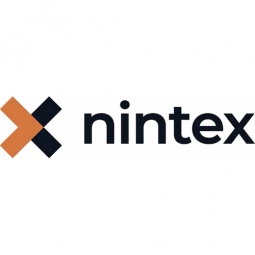Technology Category
- Platform as a Service (PaaS) - Application Development Platforms
Applicable Industries
- Cement
- Cities & Municipalities
Use Cases
- Personnel Tracking & Monitoring
- Time Sensitive Networking
Services
- System Integration
About The Customer
The Tararua District Council is a local government body in New Zealand. It is responsible for the delivery of a diverse range of services and is required to comply with various regulations. The council is also responsible for the induction and training of new councilors. The council's management style is focused on enabling people to do their jobs rather than prescribing them. They value clear processes, accountability, and the ability to quickly adapt to legislative changes. The council also values collaboration with other councils in Australia and New Zealand to build best practice processes.
The Challenge
The Tararua District Council was facing a significant challenge in managing their processes. They discovered discrepancies between their perceived processes and the actual ones. This was causing issues in compliance, risk management, and overall efficiency. The council was also struggling with the induction process for new councilors, which led to misunderstandings and errors. For instance, an issue arose when three councilors were not properly briefed on the council’s Iwi relationships. The council was also grappling with the need for frequent changes in legislation, which necessitated quick updates to their processes. Traditional flowchart systems were proving to be time-consuming and expensive for these updates.
The Solution
The council decided to switch to Nintex Promapp, a process management solution, after seeing its successful implementation in other councils. The system was tested against their existing system, Visio, and the results justified the initial capital investment. Nintex Promapp was used to create a clear induction process for new councilors, reducing the risk of misunderstandings and errors. The system also provided more visibility into job functions, improving accountability and reducing the silo mentality. Nintex Promapp also proved to be a more efficient solution for updating processes in response to legislative changes, allowing more autonomy for staff responsible for implementing these changes. The council also benefited from Nintex Promapp's Local Government Shared Process Library, which provided access to over 2,500 processes created and shared by other councils.
Operational Impact
Quantitative Benefit

Case Study missing?
Start adding your own!
Register with your work email and create a new case study profile for your business.
Related Case Studies.

Case Study
Turning A Stadium Into A Smart Building
Honeywell created what it called the “intelligent system” for the National Stadium in Beijing, China, turning the venue for the opening and closing events at the 2008 Summer Olympics into a “smart building.” Designed by highly controversial artist Ai Weiwei, the “Bird’s Nest” remains one of the most impressive feats of stadium architecture in the world. The 250,000 square meter structure housed more than 100,000 athletes and spectators at a time. To accommodate such capacity, China turned to Honeywell’s EBI Integrated Building Management System to create an integrated “intelligent system” for improved building security, safety and energy efficiency.

Case Study
System 800xA at Indian Cement Plants
Chettinad Cement recognized that further efficiencies could be achieved in its cement manufacturing process. It looked to investing in comprehensive operational and control technologies to manage and derive productivity and energy efficiency gains from the assets on Line 2, their second plant in India.
.png)
Case Study
Smart Street Light Network (Copenhagen)
Key stakeholders are taking a comprehensive approach to rethinking smart city innovation. City leaders have collaborated through partnerships involving government, research institutions and solution providers. The Copenhagen Solutions Lab is one of the leading organizations at the forefront of this movement. By bringing together manufacturers with municipal buyers, the Copenhagen Solutions Lab has catalyzed the development and deployment of next-generation smart city innovations. Copenhagen is leveraging this unique approach to accelerate the implementation of smart city solutions. One of the primary focus areas is LED street lighting.

Case Study
Buoy Status Monitoring with LoRa
The Netherlands are well-known for their inland waterways, canals, sluices and of course port activities. The Dutch Ministry of Infrastructure indicates that there are thousands of buoys and fixed items in and near water environments that would profit from IoT monitoring. One of the problems with buoys for example, is that they get hit by ships and the anchor cable breaks. Without connectivity, it takes quite some time to find out that something has happened with that buoy. Not to mention the costs of renting a boat to go to the buoy to fix it. Another important issue, is that there is no real-time monitoring of the buoys at this moment. Only by physically visiting the object on the water, one gains insight in its status.

Case Study
Barcelona Case Study
Barcelona’s heavy traffic and its associated high levels of pollution were the primary factors that motivated some companies and universities to work on strategies for improving traffic in the city centre. Bitcarrier is one of the technologies involved in the In4Mo Project, whose main objective is to develop the applications that form the core of smart mobility, one of the fundamental pillars of the smart city concept.








